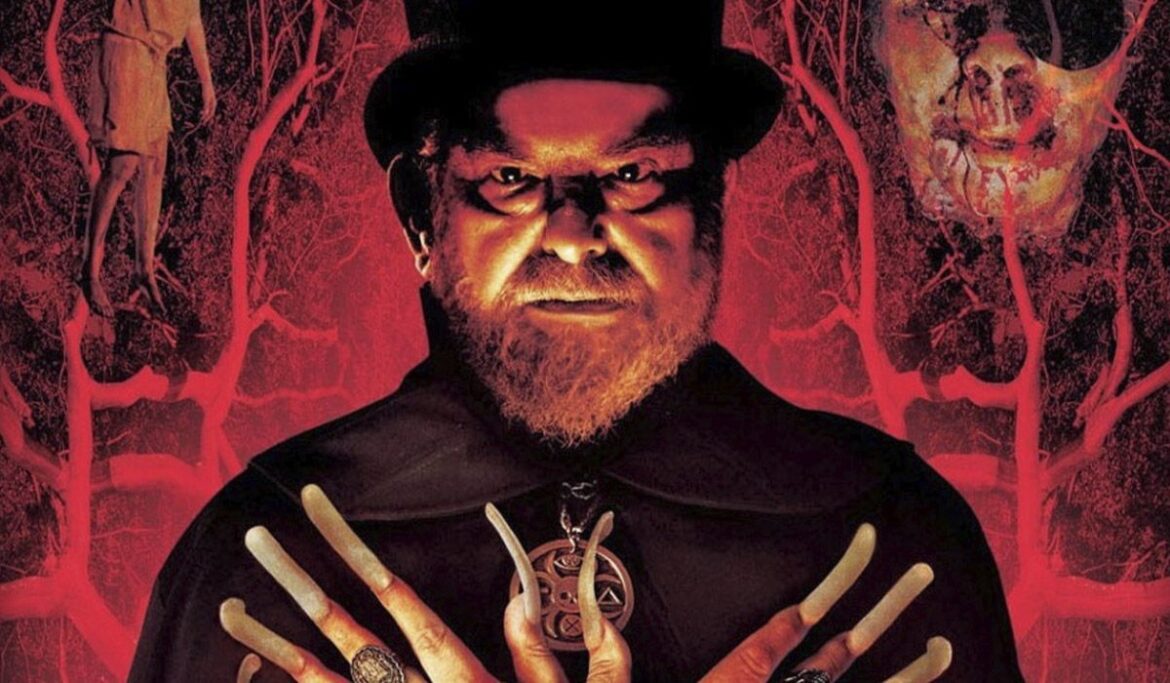Out now is a phenomenal box set from Arrow Video showcasing the movies of Brazilian underground filmmaker and horror legend- Jose Mojica Marins, aka “Coffin Joe.” Usually dressed in a top hat and black cape with outrageously long fingernails, he made a series of notorious films from the 1960s until his death in 2020, at age 83, that were real nightmare fuel, filled with lots of blasphemous swipes at the Catholic Church and horrifying images of torture and murder. He was the “Freddy Krueger” of Brazil but with real elongated fingernails instead of a razor-fingered glove. His films suddenly got so demented they were banned by the government. But he never stopped making movies.

This box set includes many of his bizarre films- often 4K restorations, and there are scores of extras including a great documentary Coffin Joe: The Strange World of Jose Mojica Marins by Andre Barcinski and Ivan Finotti that delves into his amazing life and career

Marins was born in Sao Paulo, Brazil on March 15, 1929. His father Antonio, worked in a traveling circus as a bullfighter and went on to manage a local movie theater, where the young Jose became fascinated with the horror films shown there. His father gave him an 8mm camera, and Marins started making his own movies using neighborhood children and experimenting with trick photography. He once had a nightmare in which he saw himself being dragged into an open grave by a man dressed in black which triggered the creation of “Ze do Caixao” (pronounced ZEH-dough-kySHAWN), which literally translates to “Joe the Grave” (Coffin Joe on video).
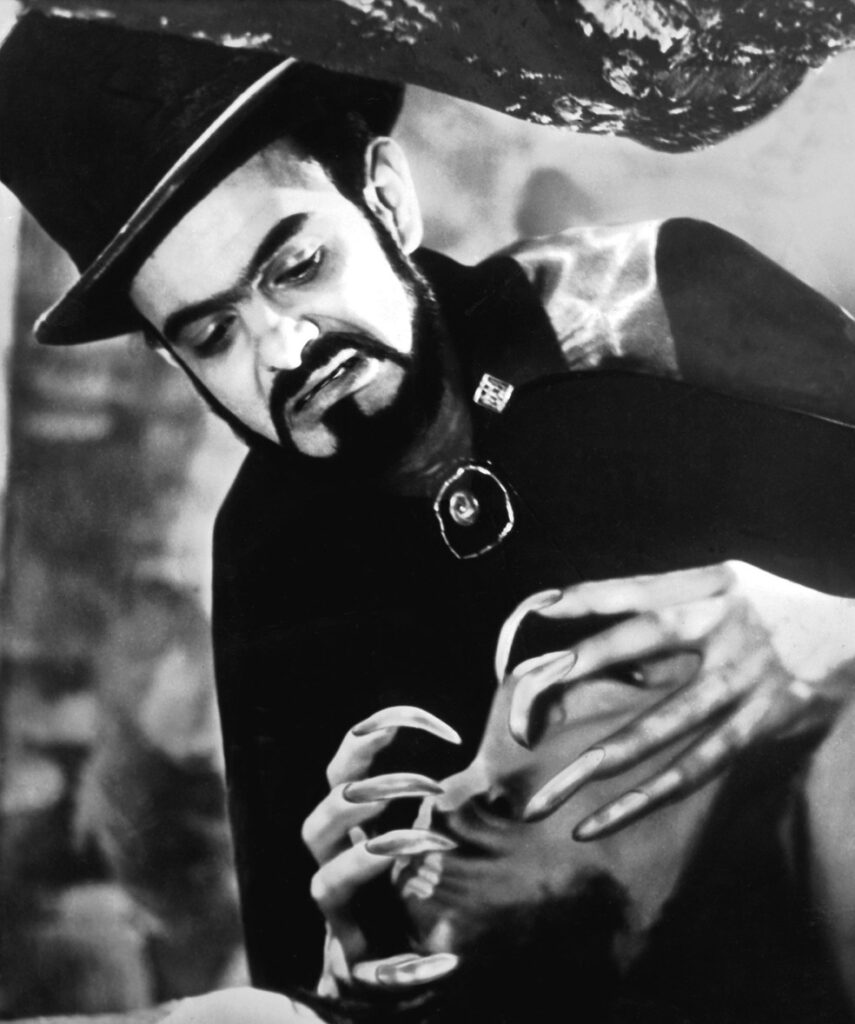
Marins later featured this villainous character in At Midnight I’ll Take Your Soul (1964). Marins plays the lead, dressed in a black top hat and cape with bushy connecting eyebrows, straggly beard and mustache, and outrageously long, curved fingernails. In the film, Coffin Joe is the local undertaker and evil town bully who is searching for the ultimate woman to sire his child and perpetuate his evil. He puts several damsels though hideous tests- like having spiders crawl over their body while they sleep- to see if they measure up. Most fail the test and die, but on the Day of the Dead the victims rise from their coffins to get their revenge.
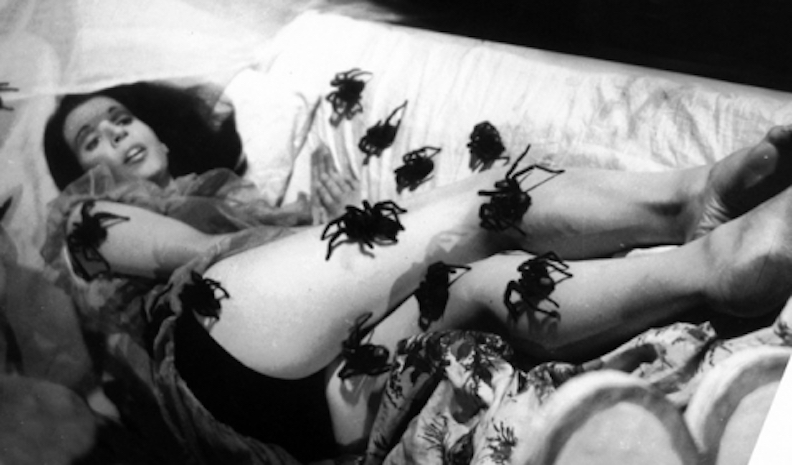
Crudely filmed in black & white, At Midnight I’ll Take Your Soul is remarkably potent stuff for 1964- filled with scandalous anti-Catholic rantings, nudity, sex and sadism. The movie became a sensation and Coffin Joe became a cult figure. Marins follow up This Night I Will Take Your Corpse (1967) begins where the other film left off and continues Coffin Joe’s reign of terror. There are scenes that scald the mind- women are covered with 50 real tarantulas and left in a pit filled with real snakes. Marins also adds an amazing color sequence in which Coffin Joe travels to hell, a surrealistic snow palace of writhing, screaming bodies. The whole film is like a nightmarish poem, disturbing and scary and pathological.
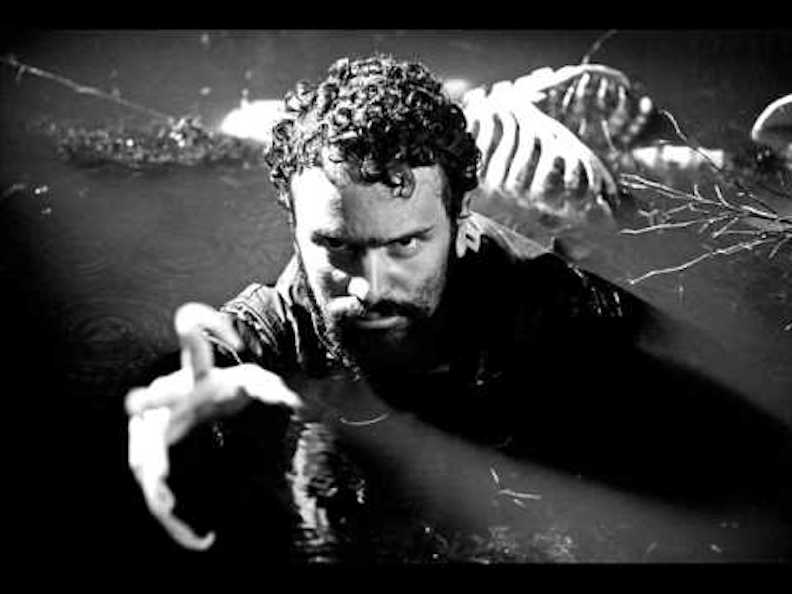
The Strange World of Coffin Joe (1968) is a trio of horror stories. One is about a necrophiliac; the last and most shocking includes Coffin Joe kidnapping a couple and forcing them to endure a series of tortures.

The Awakening of The Beast (1978) is about LSD, which included some striking hallucinatory sequences and ended up getting banned by the Brazilian government for many years. In Hallucinations of a Deranged Mind (1978), Marins shows montages of many of the scenes that had been banned from his previous films. (Don’t watch this one on a hangover).
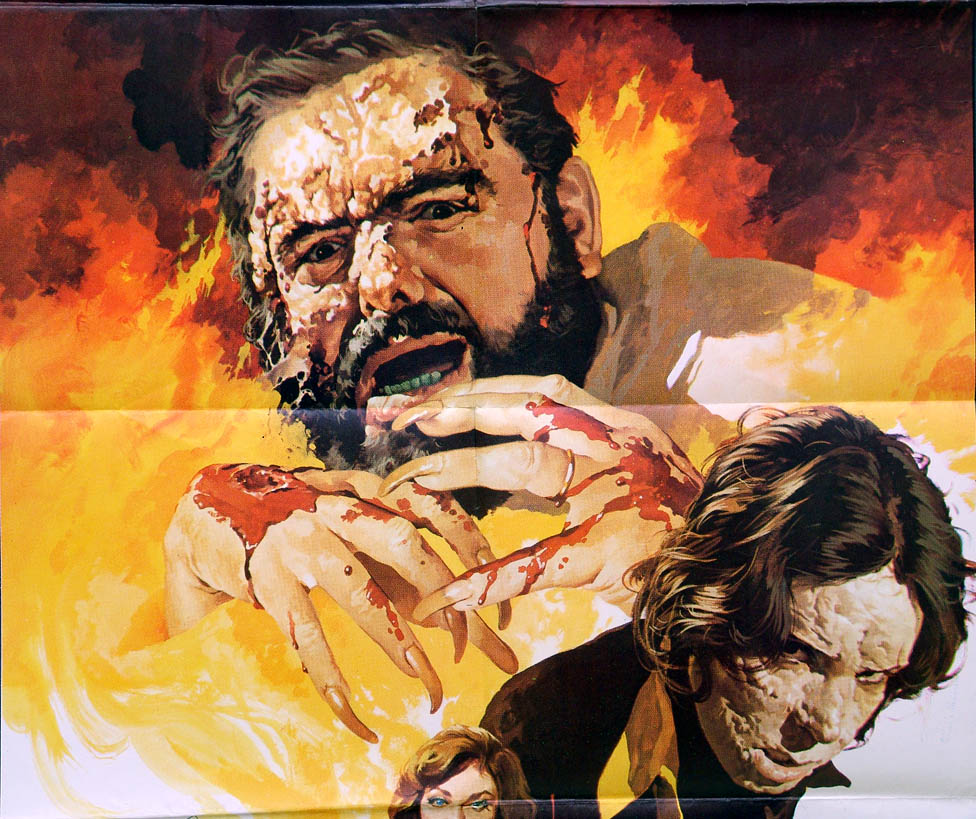
Audiences so identified Marins with the “Ze do Caixao” character that when he once ran for public office, people voted for Coffin Joe instead of Marins, invalidating the ballots. As for his obsession with children, Marins married several times and has 23 children! When he used to film in an abandoned synagogue that became his studio, Marins was also known for holding notorious casting calls where he would force aspiring actors to let rats and snakes crawl all over them (the police were called in several times).

He even incorporated his actual eye operation into a film and when told Bunuel had done that in Un Chien Andalou, Marins said: “But did he cut his own eye open?” In 2008 he made Embodiment Of Evil where “Coffin Joe” is released from Sao Paulo prison and his faithful hunchback servant Bruno and a new entourage of punked-out kids search anew for the perfect receptacle of his demon seed. Corrupt cops and a vengeful priest hunt him down. Scene after scene of surreal bloody madness reminded you that Marins had not lost his edge.

I was exposed to Marins’ films from Something Weird Video, helmed by the late, great Mike Vraney who tirelessly rescued hundreds of bizarre films from the vaults. He released the Marins films on VHS, scrambling the brains of cinemaniacs who were flabbergasted by the movies. Purists have objected to the “Coffin Joe” moniker and complain that we should say “Ze do Caixao.” But according to Mike Vraney, Marins was delighted with the name and thrilled with his newfound accessibility. For me, the films were a true discovery- a man whose dark visions and disturbing imagery were unlike anything I’d experienced before. Cheaply made and filled with amateur acting, Jose’s films were also genuinely creepy and utterly fascinating. I had nightmares for weeks after binging on them.
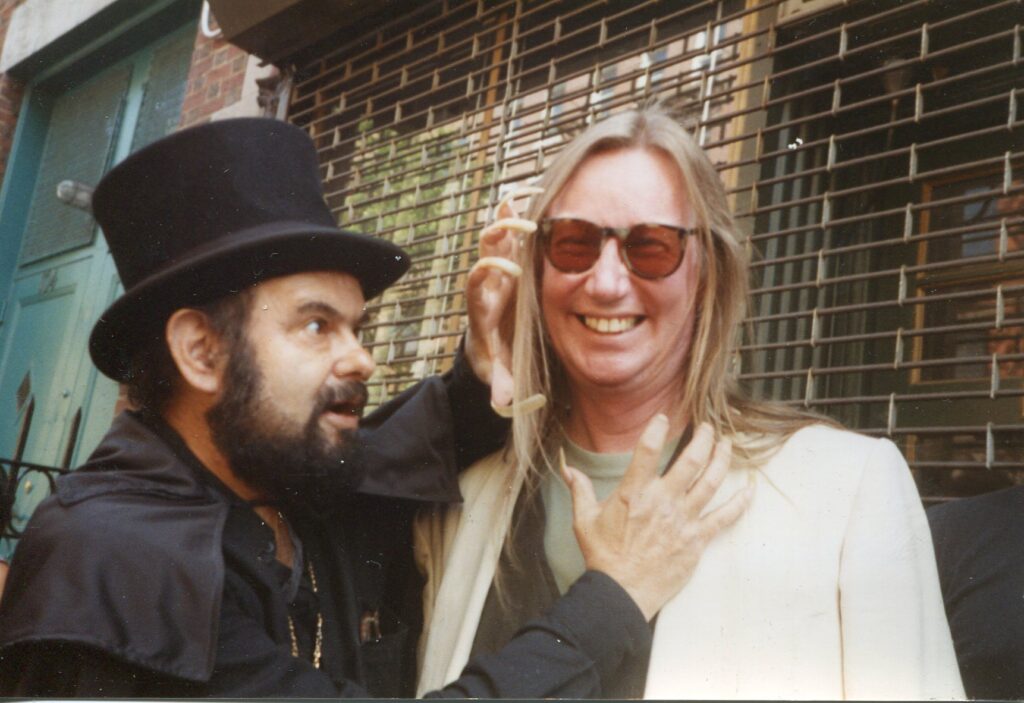
I had the golden opportunity to meet Jose Mojica Marins in the East Village once when he was in the States on a publicity tour for his films. I went with filmmaker Frank Henenlotter and his good friend Peter Clark (who shot a great picture of Coffin Joe looming over me with his extraordinary long nails).
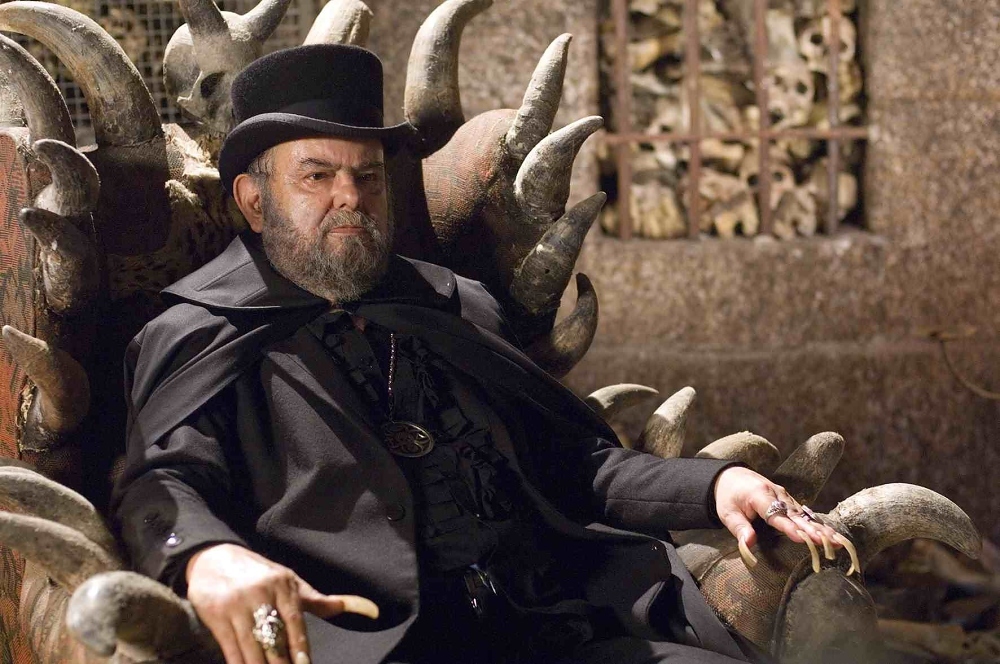
Included on 6 Blu-ray discs in the set are remarkable extras like “Eccentric of Cinema,” a detailed career assessment from Stephen Thrower; “Beyond Good and Evil” a video essay by Kat Ellinger; documentary footage of Marins at the Sundance Film Festival, not to mention excerpts of early works by the director, several audio commentaries and a gorgeous illustrated booklet with excellent essays about this true crackpot original.


